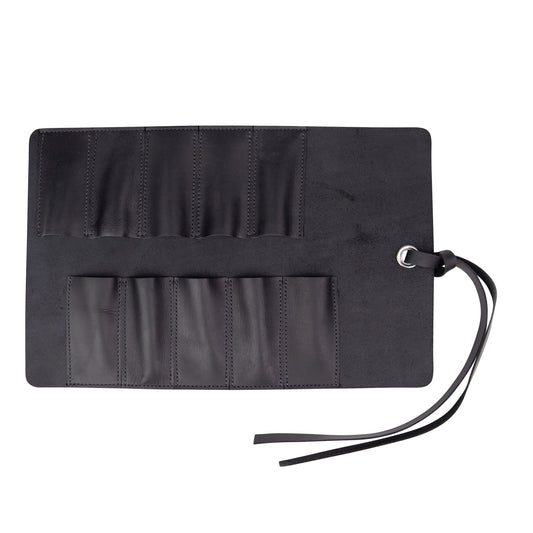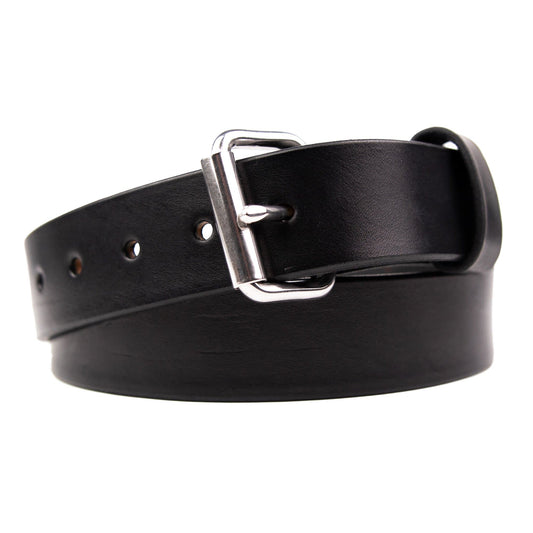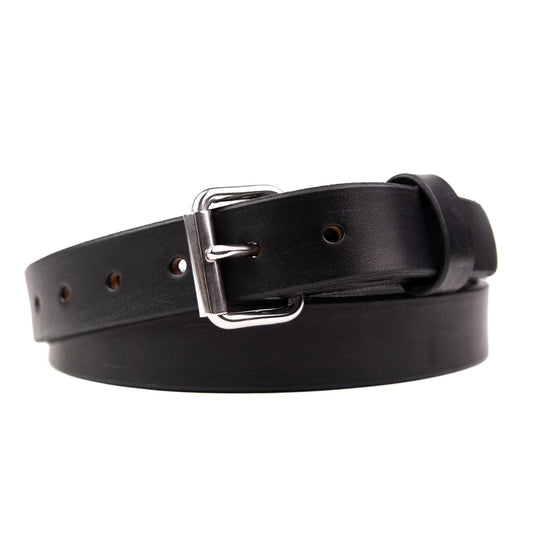A Look Back at the American Muscle Car Wars of the 60s and 70s
Ready to take a leap back in time with us? We're going back to the days when it was all about who had the biggest engine, the fastest car, and the most fans willing to pay for it. We’re talking about the golden age of the muscle car — when bigger was better, and safety standards were still just in diapers.
Starting in the early 60s and into the mid 70s, there was an all-out war between the major auto manufacturers. Chevy, Ford, Mopar, AMC, and Studebaker each tried to outperform and outsell the rest. In the process, some of the most memorable production cars ever were created.
But first, a definition is in order. What exactly is a muscle car? Depending on whom you ask, a muscle car is a factory-built, midsize sport coupe with an engine that’s built for speed. Some might alter the definition a bit, saying that it’s got to be rear-wheel drive, two-door, and run on a V8 power plant to be considered true muscle.
However you choose to define it, one thing’s for sure: they started out fast in the post-war era of the late 40s, and they only got faster.

Setting the stage for the muscle movement
When you think about what led up to the muscle car era, you realize that it was pretty much inevitable. The world’s fascination with fast cars had been running strong since the invention of the automobile. From dirt tracks and sand beaches to desert salt flats, mechanics and racers across the country were continuously pushing the limits of what their cars could do in sanctioned, legal races.
Car enthusiasts were also inspired by the legacy of Southern moonshiners and bootleggers who modified their cars for top performance in the shipping and transportation of outlawed spirits. With a nod to the super-tuned “stock cars” of old, NASCAR was born.
At the same time, drag racing was becoming extremely popular, with hot rods lining up on public roads to compete for top speed (and sometimes, pink slips). Soon, organized quarter-mile contests of acceleration would become a regular occurrence across the nation.

Who was really first?
While car fans will argue over what they consider to be the first true muscle car, many will point to the 1949 Oldsmobile Rocket 88 as The One. It boasted the first high-compression overhead valve V8 and 303 cubic inch engine displacement, and threw out 135 horsepower and 263 lb-ft of torque — a combination that allowed it to win 8 out of 10 NASCAR races during the 1950 season.
Speaking of the 50s, this was the decade that really set the stage for the modern muscle car phenomenon. By the mid-50s, every major manufacturer had jumped into the game, trying to create muscle cars for the masses. In the process, they would pioneer new innovations that would again take motorsports to the next level.
One of the most notable cars of this era, the 1955 Chrysler C-300 included that automaker’s fairly recent invention. The “Hemi” V-8 was an engine named for the hemispherical combustion chamber it used to improve airflow and boost output. It did just that, giving the C-300 its namesake’s worth of horsepower and inspiring the marketing tag-line: “America’s Most Powerful Car.”
That same year, Chevy introduced what would become a true winner. The small-block V8 could outperform larger engines while weighing less than its six-cylinder predecessor. It was also extremely customizable, and its basic engineering concepts are still seen in cars today.
As the 50s marched on, Chevy would offer fuel injection, Ford and Studebaker would bring supercharging to the market, and Pontiac offered a dual package of fuel injection and “tri-power,” consisting of three two-barrel carbs.
But the late 50s would also bring tragedy and a brief halt to organized racing. Following a horrific crash at the 24 Hour of Le Mans, the Automobile Manufacturer’s Association agreed to a 1957 ban on factory-sponsored racing. This ban would last six years and when it was finally lifted, the muscle car scene was poised to change forever.

The 1960s – Standouts and scene-stealers
Moving into the swinging sixties, carmakers were slowly picking up the pace to see who could build the fastest car. The 1962 Dodge Dart was an early contender with its eye-popping, 13-second quarter mile time. Pontiac had experimented with a lighter build in 1963 with its Super Duty 421 built on a “swiss cheese frame” consisting of bored out holes in the metal frame.
But 1964 saw the real beginning of the golden age of muscle cars. The Pontiac Tempest GTO was released, ignoring GM’s internal limitation of 330 cubic inches on small cars. The hope was that it would compete with the Plymouth Sport Fury and Dodge Polara 500, both of which had seen larger engine sizes coupled with smaller frames. The aim was simple: find the biggest engine you could and pair it with the lightest body possible. With 348 horsepower, the GTO could handle 0-60 in 6.6 seconds and a standing quarter-mile in 14.8 seconds. Coming in with a price tag of $3,200, it sold over six times the quantity of what was predicted in its first year alone.
Over at Ford, they had developed their own contender: the Ford Thunderbolt. Complete with 427 cubic inches of output, it was considered too powerful (and dangerous) to drive, and only 127 were made.
That same year, the famous Ford Mustang would be released. With its low price, good looks, and lower power output, many consider it to be the original “pony car.” A pony car, you ask?

Running with the ponies
This term can vary in meaning from make to make, but a pony car is generally considered affectionately as a sub-category of muscle cars. For some, it’s a step down in power. Usually compact in size, these sporty coupes or convertibles feature a long hood and short decklid. In addition to the Mustang, the pony car category included the Chevy Camaro, Dodge Challenger, and Plymouth Barracuda. Throughout the 60s and 70s, these cars would offer stylish looks and affordable price tags, while several remained a bit short on performance.
Incidentally, the Mustang would get a major upgrade between 1965 to 1968, and then again from 1969 to 1970, when Ford partnered with car designer Carroll Shelby to create the GT350 and GT500 models. The cars weren’t just head-turners – they proved to be major leaps forward in performance.

Goodbye 60s, hello 70s
As the 60s drew to an end, the American muscle car was at its peak. But all great things must come to a screeching pause, right? Trouble was brewing for the car industry in the form of emission limits, insurance regulations, an oil crisis, and rising inflation. To meet government standards, manufacturers in the 70s and 80s would detune those powerful engines and add weight for sturdier — but slower — performance. Eventually, people began to turn away from muscle cars.
Many believe that the last true performance muscle car built in the 70s was the
1974 Pontiac Firebird Trans Am SD455. That and the Camaro were just about the only true pony cars left (the Mustang had since left the scene and transformed into a high-end compact).
It wouldn’t be until the end of another gas crisis, in 1982, when demand in the market would return. Throughout the years, the muscle car would evolve with advanced technology, bigger, more compliant engines, and better production methods. Today, most major automakers are enjoying a muscle car renaissance with high-end versions of old favorites like the Mustang, Camaro, Challenger, and Charger in current production.

Ending on a high note
When you talk about the great muscle cars of the 60s and 70s, it can be hard not to focus on their demise in the mid 70s (who can forget the utterly forgettable Mustang compact edition?). But when we look back at such a unique moment in American car making, you can’t help but feel a little bit of the excitement that was in the air back then.
In a sense, they were all winners. They were big, beautiful machines built to go fast and inspire a sense of power in both the driver and the spectator. And because of that, we’re all winners, too. We’ll end our look back with a shout out to just a few of the many memorable cars from the era that was muscle.
1964 1/4 Ford Mustang 289 V8
No muscle car list is complete without mention of the original Pony car. Its power to weight ratio was a new chapter.
1968 Plymouth Road Runner
Who said you couldn’t build a muscle car on a budget? This little number turned out to be one of the most influential cars of the decade.
1967 Shelby Cobra 427 Super Snake
There’s Shelby at it again. Built for the street with race car styling, it was the ultimate in muscle performance, throwing down 800 horsepower.
1969 Chevrolet Camaro ZL1
They only made 69 of these 500 horsepower specials.
1968 Dodge Charger R/T
You may have seen this attention-getter as a regular in the “Fast and Furious” movie series.
1969 Dodge Super Bee Six Pack
We’re talking serious power with three Holley two-barrels on a 440 cubic inch displacement V8.
1971 Pontiac Firebird Trans Am
Meet the largest engine ever thrown into a pony car: a 455 cubic inch displacement V-8.





